India is a land rich in history, culture and heritage. From being the land of princely states to being the nation bearing the riches of regal history, the nation has quite a sublime legacy to boast of. While the whole of the country is a land abounding in heritage and history, it is south India in particular that draws parity to the esteem of the times gone by in a manner somewhat spectacular. From harbouring lavishness to boding humongous value in its ancientries, India of the south has many places of historical importance. Outlining some such places down south in our country that is bearer of tremendous pride in its erstwhile history-
1- Hampi (Karnataka)
- UNESCO World Heritage Site: Known for its ancient ruins and temples.
- Vijayanagara Empire: Former capital during the 14th century.
- Key Monuments: Virupaksha Temple, Vittala Temple, Stone Chariot.
- Historical Significance: Mentioned in ancient texts like the Ramayana.
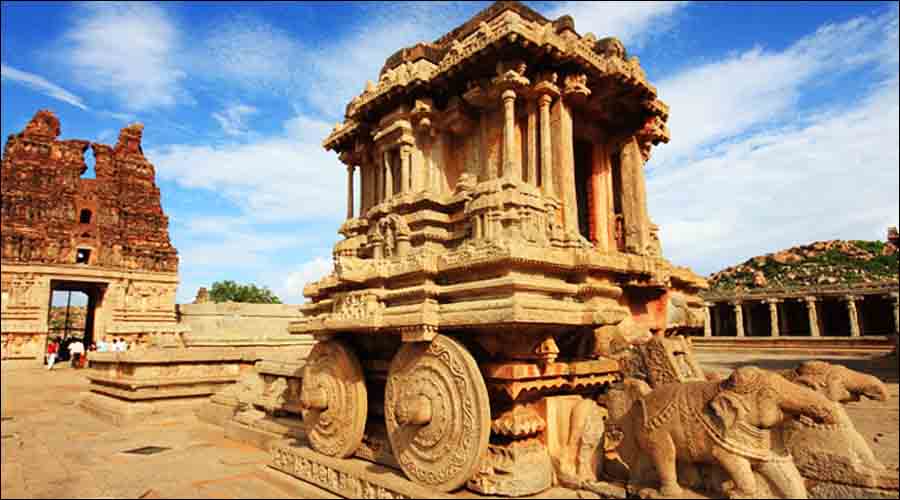
Bewitching and besotted with beauty, Hampi in Karnataka might be a small town but is easily one of the most magical tourist destinations in India. Among the many historical places that south India sits buoyant in, Hampi is diversive as well because of its offbeat vibe. Be it the burgeoning grandeur of the boulders or the tinkling bells of the numerous temples, Hampi never fails to fascinate. There’s always so much of history to unearth in this town that is home to the Hampi Group of Monuments, one of India’s many UNESCO World Heritage Sites.
In finding mention in such epics and scriptures as the Ramayana and the Puranas, Hampi establishes credibility as quite an ancient city. As also a part of the Hindu Vijayanagara Empire during the 14th century, Hampi makes its historical lineage all the more apparent. Even when it was in ruins, Hampi has stirred interest of archaeologists and historians and continues to entice tourists with its long standing legacy and of course its laidback yet sprightly way of life.
Hampi’s Riverside Ruins are particularly popular and so are its many temples. There also is the iconic King’s Balance beckoning with its own aura of history even as Hampi’s royal enclosure, the Elephant Stables and the zenana unfold a different world in time altogether before you. Equally captivating is the striking graffiti the town sports all around even as its many lush green rice fields and its pristine beauty makes Hampi a delight for all kinds of travelers and tourists. In its esteemed history and ethereal beauty, Hampi is no less than a wandering heaven.
- Suggested Tour: Hampi Tour Packages
2- Mysore (Karnataka)
- Royal Capital: Served as the capital of the Kingdom of Mysore for over six centuries.
- Mysore Palace: Renowned for its grand architecture and opulence.
- Historical Figures: Associated with Tipu Sultan, the “Tiger of Mysore.”
- Cultural Capital: Famous for its Dasara festival and rich cultural heritage.
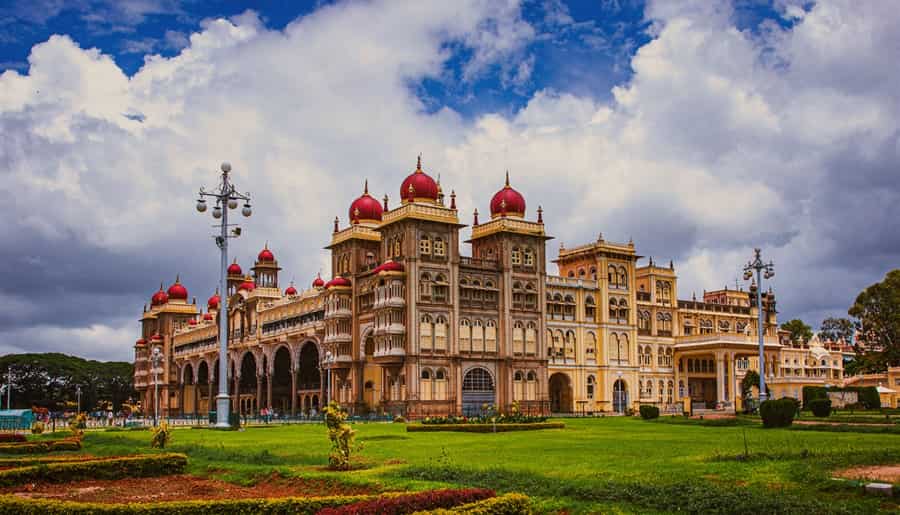
In serving as the capital city for the Kingdom of Mysore for six centuries, Mysore immediately asserts its legacy as a place resplendent in its historical past. The Cultural Capital of Karnataka, Mysore also owes its rich cultural ambience to this esteemed past as it does also its heritage identity. Most famous for its royal Mysore Palace which also is one of the most beautiful palaces in India and among the most visited tourist destinations in the country, the city is celebrated in being the Palace City of India. That itself is a definite testament to its historical stemmings, when erstwhile royalty endowed Mysore the heritage making it among the most regal places in south India. Particularly in being the kingdom of Tipu Sultan, Mysore’s esteemed placing as a city of historical interest receives further validation.
- Suggested Tour: Mysore Tour Packages
3- Hyderabad (Telangana)
- City of Pearls: Known for its Mughal and Nizamic heritage.
- Iconic Structures: Charminar, Golconda Fort, Taj Falaknuma Palace.
- Historical Significance: Center of the Mughal empire and later Nizams.
- Cuisine: Famous for Hyderabadi biryani and other culinary delights.
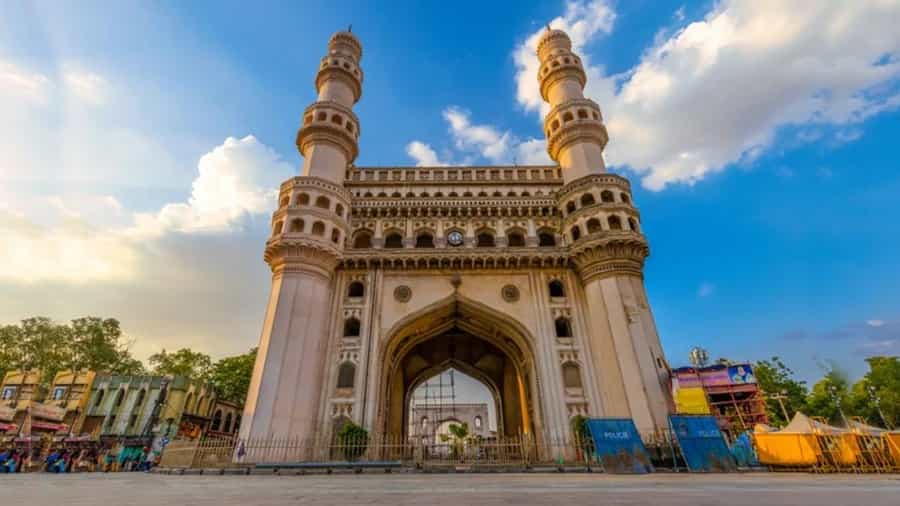
Perhaps somewhat distinctive in its historical glamour among all such places in south India is the City of Pearls Hyderabad. A city steeped in the lustre of the glorious Mughal rule of the past as well as in its Nizamic essence, the charm of Hyderabad rests in its dominant disposition as a land boasting the glitter of some of the richest eras in history. The towering vision of the Charminar that the city identifies with, the majestic grandeur of the Taj Falaknuma Palace, the grandiose of the Golconda Fort or the subdued charm of the Qutb Shahi Tombs, the enigma of Hyderabad is a dazzling chapter in royal history.
- Suggested Tour: Hyderabad City Sightseeing Tour Package
4- Kochi (Kerala)
- Queen of the Arabian Sea: Prominent port city with a rich maritime history.
- Historic Sites: Mattancherry Palace, Fort Kochi, Bolgatty Palace.
- Cultural Melting Pot: Influences from Portuguese, Dutch, and British eras.
- Spice Trade Hub: Central role in India’s spice trade history.
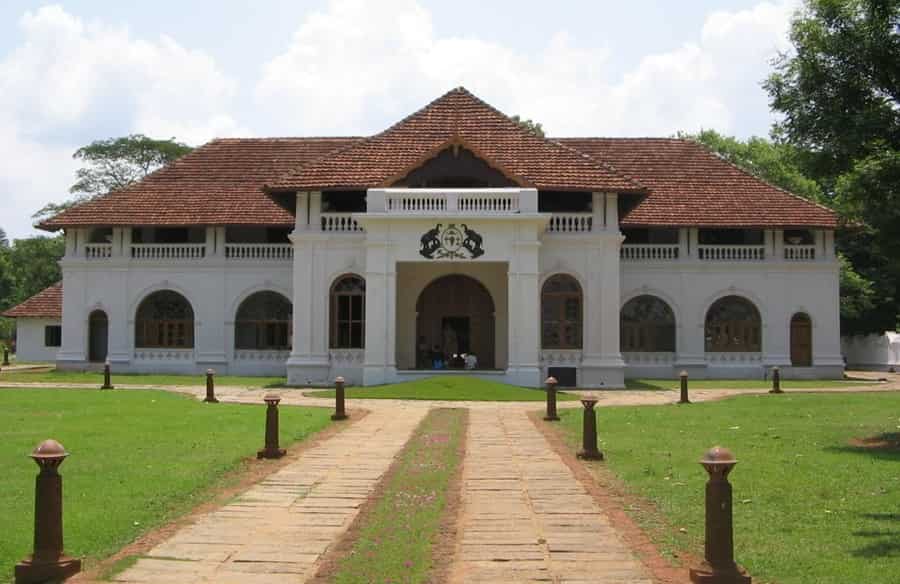
As a city that traces its history back many centuries, the Queen of the Arabian Sea Kochi is a definite wonder. As magnificent in its beauty as glorious it is in its past, the Kochi of the modern times have also gained significant exposure to emerge as one among Lonely Planet’s top 10 cities to visit in 2020. On the southwest coast of India, along the majestic Western Ghats and the magnificent Malabar coast, Kochi sits indeed like a Queen herself, adorned by sights and graced by magic of the abundant natural beauty it guards. Whether you want to amble along the city streets admiring its very paradisiacal presence or explore the many erstwhile influences it still nestles as an essence of its own, Kochi will make you feel at home- alive, relaxed and oh so joyful!
In its history, Kochi is rather prominent. In being at the center of India’s spice trade for hundreds of years as well as a rather prominent trading port, Kochi dwells in a presence exclusive to it. No wonder this city in south India abounds in a number of places that fascinates with its historical grandeur. Harbouring the richness of Kochi’s past is the Kochi Fort and the Pallipuram Fort and of course a host of palaces like the Mattancherry Palace Museum, the Bolgatty Palace, the Hill Palace et al. Parallel with the riches of the times is also the myriad rich hues of nature that comes naturally to Kochi in being the Gateway to God’s very own country Kerala that further enhances its appeal all the more.
- Suggested Tour: Kochi Tour Packages
5- Mahabalipuram (Tamil Nadu)
- UNESCO World Heritage Site: Known for rock-cut temples and sculptures.
- Pallava Dynasty: Flourished during the 7th century.
- Key Monuments: Shore Temple, Pancha Rathas, Descent of the Ganges.
- Architectural Significance: Displays intricate rock-cut art and architecture.
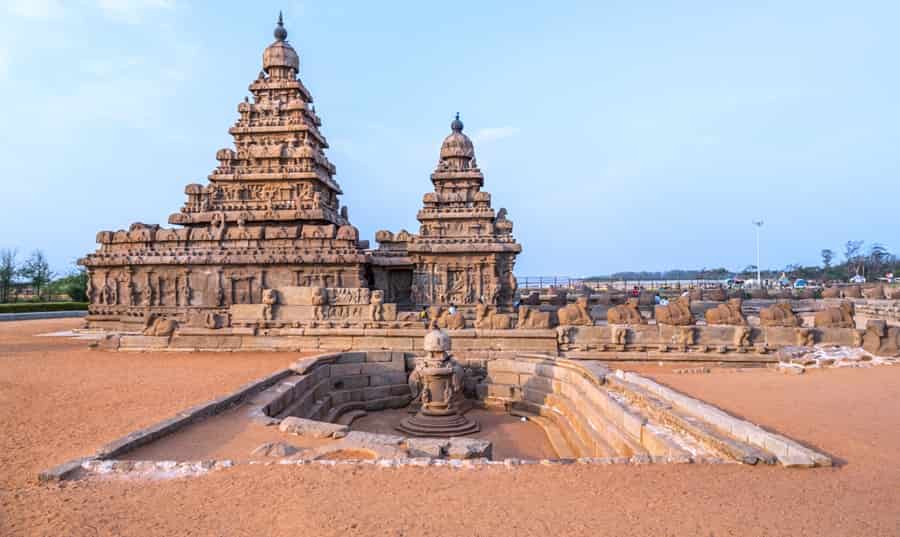
Mahabalipuram, literally translating as the city of great power is also one residing in great richness of its history. Famed for its UNESCO World Heritage Site group of monuments, this famous tourist site in Tamil Nadu was a part of the Pallava kingdom during the 7th century. In its economic flourish as well as in its prized possession of the group of monuments carved out of living rock, Mahabalipuram has always been a seat of tremendous significance. The Seven Pagodas of Mahabalipuram of the ancient times had been as discreet a marker of the city’s identity as its present day heritage monuments. An active hub of global trade in the late classical period, ancient temples, caves and such other landmarks bears impression of Mahabalipuram being one of the most significant historical places of India down south.
6- Sultan Bathery (Kerala)
- Historical Jain Temple: Significant site with a history dating back to the 13th century.
- Tipu Sultan: Used as a military base during his campaigns.
- Protected Monument: The Jain temple is safeguarded by the Archaeological Survey of India.
- Scenic Beauty: Surrounded by lush greenery and serene landscapes.
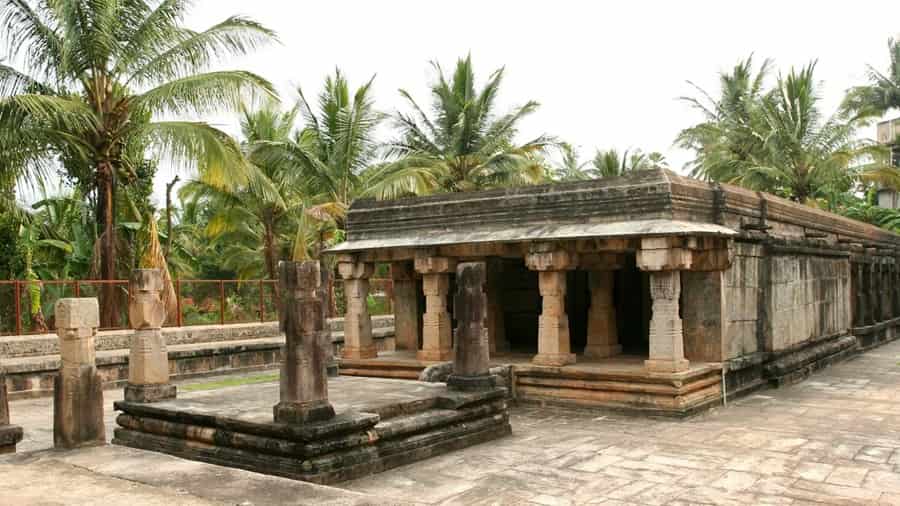
Some few distances away from Mysore in south India lies another of the places that nestles in historical importance. Sultan Bathery, a town in Wayanad district of Kerala, traces its legacy back several centuries earlier that marks even its present day identity. Popular also for its ancient temples, the serene town has a host of other attractions as well that make it a tourist favorite. Most prominent is the Sultan Bathery Jain temple that has been in existence since the 13th century CE and is famous for being the armor hoarded for Tipu Sultan. A protected monument under the Archaeological Survey of India, much of the historical legacy of Sultan Bathery stems from this eponymous temple. Verdant greenery dotted by archaic presences, this is the place offering a slice of history with ample beauty on the plate.
7- Halebidu (Karnataka)
- Former Hoysala Capital: Known for its exceptional Hoysala architecture.
- Key Temples: Hoysaleswara Temple, Kedareswara Temple.
- Architectural Detail: Famous for intricate carvings and sculptures.
- Historical Legacy: Reflects the artistic achievements of the Hoysala Empire.
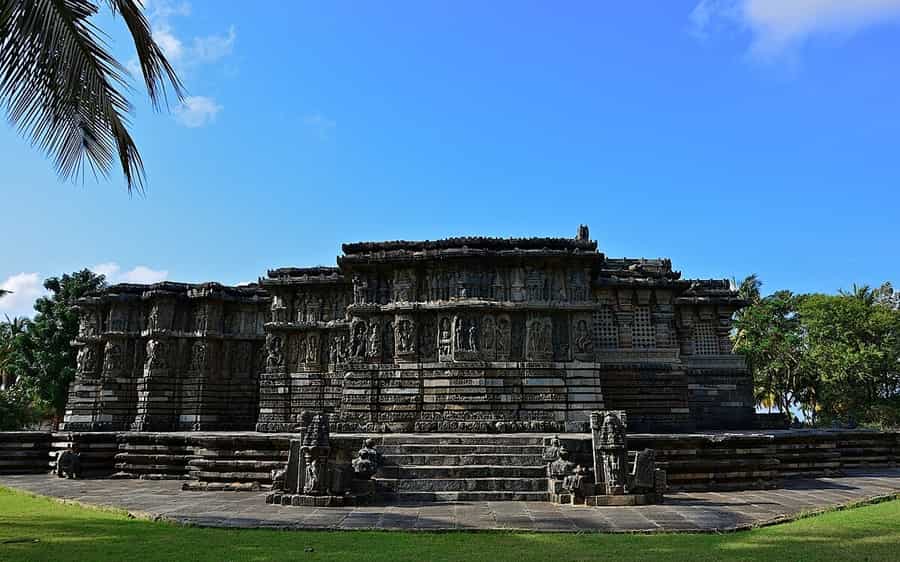
The regal capital of the Hoysala Empire in the 12th century, Halebidu in Karnataka is another historical place. Housing some of the most exemplary specimens of Hoysala architecture, the town known for its temple complexes remains frozen in time and carries definite distinction in its historic prominence. Harbouring many a gem of Indian architecture within its illustrious expanse is this significantly revered city of also cultural presence. Even in existing now only as a ruin, this is one of the most important historical places in south India and reinforces its proud erstwhile legacy well into the present day.
8- Warangal (Telangana)
- Kakatiya Dynasty Capital: Served as the capital during the Kakatiya reign.
- Historic Monuments: Warangal Fort, Thousand Pillar Temple, Ramappa Temple.
- UNESCO Tentative List: Ramappa Temple is a candidate for UNESCO World Heritage status.
- Cultural Significance: Known for its rich historical and architectural heritage.
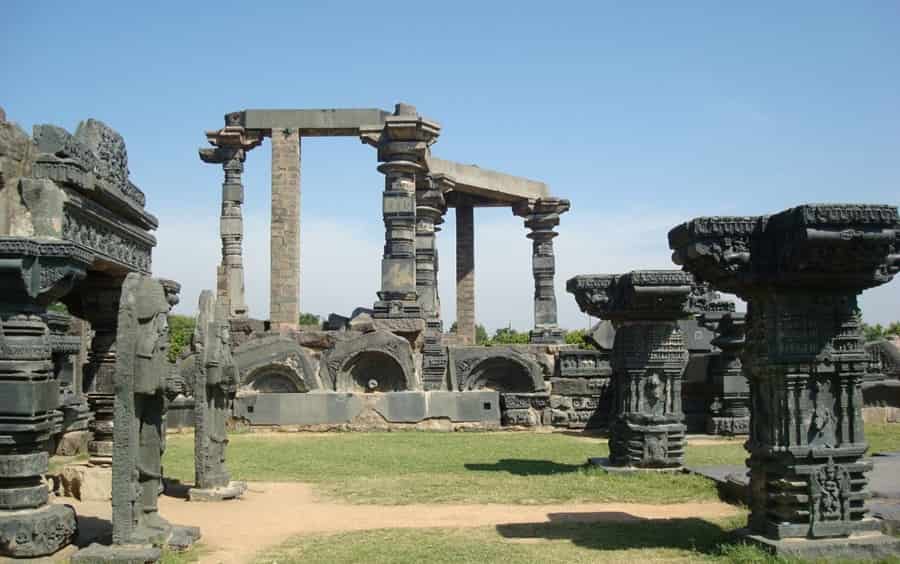
Another historical presence in the state of Telangana is the city of Warangal that had been the capital of the Kakatiya dynasty. With a host of Kakatiya monuments like fortresses, lakes, temples and stone gateways within its confines, Warangal has emerged to be one of the many places in south India that abound in historical legacy. There’s the Warangal Fort, the awe inspiring Thousand Pillar Temple and the Ramappa Temple that find inclusion in the tentative list of UNESCO World Heritage Sites in India. There also is the beautiful Khush Mahal located near the Warangal Fort, that which serves as a reminder of the city’s glorious past. Other historic as well as religious sites dot the premises of this city, awarded by the Ministry of Tourism as the Best Heritage City for 2014-15. Needless to say, Warangal is an offbeat yet prime presence among India’s numerous historical places.
Each of these locations offers a unique window into South India’s rich historical and cultural heritage, making them invaluable for anyone interested in exploring the past.
- Suggested Tour: South India Tour Packages

 Call
Call WhatsApp
WhatsApp Enquiry
Enquiry